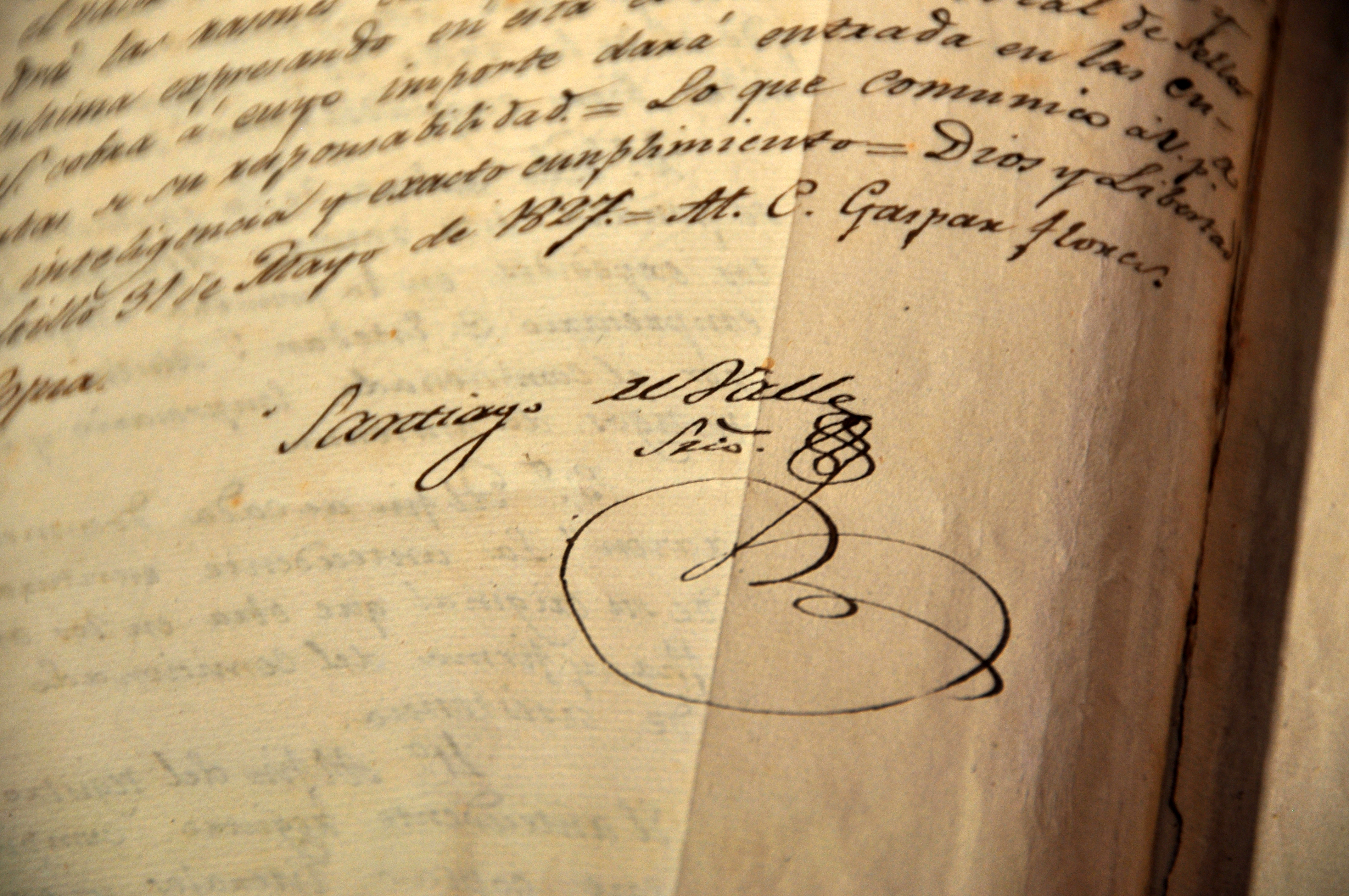The Texas Court of Claims was an administrative body created to perform a thorough audit of certificates that had already been issued, as well as to review claims and issue original, duplicate, and unlocated balance certificates to those who provided substantial evidence. The Court of Claims Records contain reports and correspondence in 5 series: Court of Claims Files (1856-1861) , Court of Claims Reports (1856-1861), Unlocated Balance Certificates (January 1856 - July 1859), Commissioners of Claims Letters (1856-1861), Supporting Documents (1856-1861).
Prior to the establishment of the Court of Claims, land fraud was a common problem in Texas. Without a system in place to verify land claims, two or more certificates were sometimes issued for the same military service; when settlers claimed “lost” certificates, duplicate certificates were often issued without first checking with the General Land Office to determine whether or not the original certificate had already been redeemed or "returned."
The problems were exacerbated by a fire that destroyed the Adjutant General’s Office in October 1855. The records of the War Department of the Republic of Texas and the records of the Adjutant General of the State of Texas were all lost. The records included lists of soldiers and their heirs who had already received land for their service along with muster rolls and important documents needed to prove the claims for those who had not yet received land.
The Texas Court of Claims was an administrative body created to perform a thorough audit of certificates that had already been issued, as well as to review claims and issue original, duplicate, and unlocated balance certificates to those who provided substantial evidence.
The Court of Claims was established by the legislative act, "An Act to ascertain the legal claims for money and lands against the State.” (Acts 1856, 6th R.S., ch. 93, General Laws of Texas) , subsequently supplemented and amended in 1858 (Acts 1858, 7th R.S., ch 43, General Laws of Texas).
All outstanding certificates and surveys that had already been issued and returned to the GLO but not yet patented were subject for registration and approval by the Court of Claims. An exception was made for First and Second Class headright certificates (which had already been reviewed and confirmed by the Traveling Board of Land Commissioners), certificates issued by Special Act, certificates issued to colonists of Mercer, Castro, Peters, Fisher and Miller, and the German Emigration Company, and certificates issued to companies for internal improvements and certificates issued for building ships. All other unpatented certificates were required to be presented before the Court of Claims for approval.
In addition to applicants who were in possession of unpatented certificates, there were many settlers who were entitled to land but had not yet received their certificates. These settlers were required to submit evidence in order to prove their claim. After cases were closed, the evidence was often returned to the applicant. However, some Court of Claims files may still contain newspaper clippings, letters, dispositions, testimonies, and eye witness accounts.
The Court of Claims closed its doors on December 31, 1861 which marked the end of Texas granting headright, bounty, and donation certificates. Anyone seeking one of these land grants after 1861 had to petition the legislature to pass a Special Act.
The Court of Claims Records contain reports and correspondence in 5 series:
I. Court of Claims Files (1856-1861) contain correspondence, petitions, and depositions presented on behalf of each claim. Many of the depositions and letters describe circumstances and incidents from the war of Texas independence as well as early life in Texas. Some of the files contain only the file wrapper, the certificate having been returned to its owner after being examined and approved by the Court of Claims.
The series includes 10 bound indexes including one that was mistakenly titled "Index to records of patents on Galveston Island Lots," but in fact is a Court of Claims index linking name to a file number no longer used (but can nevertheless still be seen on the file wrapper). The other 9 are titled based on what is written on their spine, which for some, is erroneous. Title in brackets are accurate descriptions of the contents.
II. Court of Claims Reports (1856-1861) contain condensed reports of the business of the Court for a given period of time. Each report contains a ledger of claims investigated, separated by type of grant (e.g. donation) and a listing of certificates issued by the court. These files appear to be a complete collection of all reports issued by the Court of Claims.
The series also includes, substantially, four annual reports to the Governor by the Commissioner of Claims. There are actually six, but two of them appear to be copies (one has a slightly different date).
III. Unlocated Balance Certificates (January 1856 - July 1859) contain reports created by the Court of Claims certifying an individual's claim to the remainder of land previously granted by certificate which had not yet been located, surveyed or patented. Many of the reports have notations that link the unlocated balance certificate to the land grant file documenting the portion of land already settled.
IV. Commissioners of Claims Letters (1856-1861) contain original correspondence from individuals or land agents asking a variety of questions about land grants. Unfortunately, the responses were not copied and kept with the correspondence so it is unknown what the Land Office reply was.
V. Supporting Documents (1856-1861) contains 8 documents related to the process of conducting business with the Court.
Each series is arranged as follows:
I. Court of Claims Files (1856-1861) was originally ordered by voucher number, but has been rearranged alphabetically by applicant name.
II. Court of Claims Reports (1856-1861) are arranged chronologically.
III. Unlocated Balance Certificates (January 1856 - July 1859) are arranged chronologically.
IV. Commissioners of Claims Letters (1856-1861) are arranged by surname of the person making the inquiry.
V. Supporting Documents (1856-1861) are arranged by physical location.
[Short title of Document], [Date: Day-Month-Year]. Box [#], Folder [#], p. [#]. Court of Claims Records (AR.40). Archives and Records Program, Texas General Land Office, Austin.
Unrestricted access.
Most records created by Texas state agencies are not copyrighted and may be freely used in any way. State records also include materials received by, not created by, state agencies. Copyright remains with the creator. The researcher is responsible for complying with U.S. Copyright Law (Title 17 U.S.C.).








